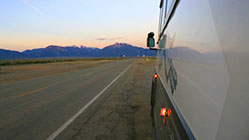The iconic profile of Santa Eulalia la Mayor rises from the gorges of the Guatizalema River, overlooking the plain below at the edge of the Sierra de la Gabardiola.
Its tower, a defensive bulwark from the 11th century, towers over the surrounding area at 867 meters above sea level, a strategic position when it was built and today providing outstanding views of the surrounding area.

The hamlet is staggered, the result of the uneven terrain, with the 17th-century Parish Church of San Pedro taking up a prominent position.
Nearby are several examples of the region’s cultural heritage that date back to different historical and prehistoric periods. The first is the Chapel of Sescún, a simple transitional Romanesque-style building. Another interesting visit is to the abandoned medieval village of Isarre. And the sanctuary cave of San Chinés, of Hispanic-Visigothic origin, and the “Cuatro Vientos” shelter, with traces from the Eneolithic and Bronze ages.
Santa Eulalia (or Santolaria) celebrates its annual festival on February 2nd in honor of the saint of the same name, a minor festival is held during Pentecost, and the village participates in the pilgrimage to the Chapel of the Virgen del Viñedo, the region’s quintessential and most popular holy site.






























